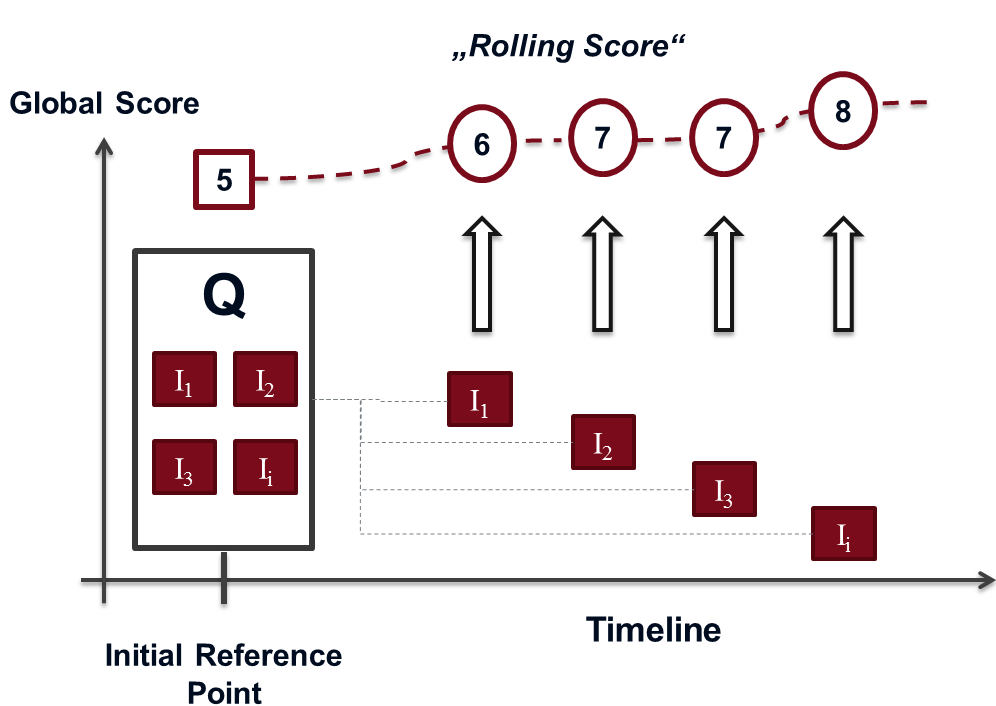mQoL – the Rolling Score Concept
Quality of life (QoL) measures are more and more used in medicine to assess the efficacy of interventions, the quality of service, the need for health care, and in cost analyses. The use of QoL Questionnaires reflects a growing appreciation of the importance of how patients feel and how satisfied they are with treatment. QoL measures capture patients’ perspectives of their disease and treatment, their perceived need for health care, and their preferences for treatment and outcomes.
AIT’s innovative approach called the Rolling Score Concept has been developed, using standardized QoL questionnaires and mHealth methods for continual scoring of individuals’ health state through electronic patient reported outcome (ePRO).
The AIT Rolling Score Concept consists of a mHealth application on a smartphone and a web-based backend solution (KIT Telemonitoring platform). At start, all items (questions) of a standardized questionnaire have to be answered to obtain an Initial Reference Point. Subsequently, all items were asked according to the Time Schedule. After answering, the Global Score is recalculated, resulting in a continual adaptation of the Global Score over time, the Rolling Score.
Advantages
- Improved patients’ compliance, because answering a subset (e.g. 4) out of 30 questions is feasible without losing motivation.
- Get information about the efficacy of treatment and enable timely intervention based on feedback from the patients in more frequent, quasi continuous manner.
- Assess QoL based on the combination of qualitative information about the health status with quantitative information form health diary data (blood pressure, heart rate, glucose levels, etc.)
- Keep contact with the patient between scheduled visits in the ambulance or at the physicians’ office.
In addition, a quantification of parameters represents a promising way to avoid the incorrect subjective character caused by estimations easily by substitution of questions using sensor data (blood pressure, heart rate, glucose levels, SpO2, and others). A specific algorithm maps these sensor data to the scoring system of the questionnaire and, consequently decreases the uncertainty of subjective perception.
In a pilot trial about at the AIT “Continual Screening of Patients using mHealth: The Rolling Score Concept applied to Sleep Medicine” the following QoL have been processed to the rolling score model:
- M. J. Thurtell et al. “The Berlin questionnaire screens for obstructive sleep apnea in idiopathic intracranial hypertension.” In: J Neuroophthalmol. 31.4 (Dec. 2011), pp. 316–319.
- Mark Fenton et al. “UTility of stop-bang in the prediction of obstructive sleep apnea in primary care.” In: Chest 148.4 Meeting Abstracts (2015), 1033A–1033A. doi: 10.1378/chest.2278516. url: http://dx.doi.org/10.1378/chest.2278516 .
- D. J. Buysse et al. “The Pittsburgh Sleep Quality Index: a new instrument for psychiatric practice and research.” In: Psychiatry Res 28.2 (May 1989), pp. 193–213.


